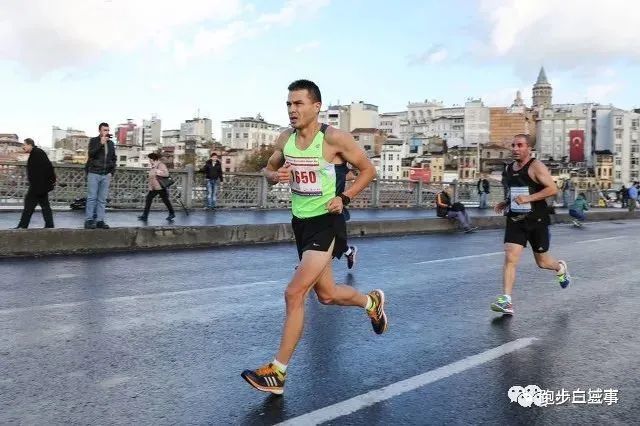The huge ground impact is not effectively buffered and directly passes through the heel.

Stride is the distance between our feet touching the ground.
It is like a pair of twin brothers with stride frequency.
It is necessary to introduce the stride here.
During running, both feet are constantly switching on the ground: lifting feet – landing – lifting feet.
At this time, because the knee joint is in a straight state, the muscles around the knee joint can not absorb the impact force.
Of course, step by step.
Each landing, the load on the ankle is several times that of the body weight, especially when the ankle touches the ground, which is also the stage where we are most vulnerable to injury.
If the step frequency is only about 160 at the beginning, it is recommended to press 170 for about two weeks, and then slowly improve when it is stable.
When it comes to running speed, it can be summarized by a simple formula, that is, speed = stride frequency × stride.
Studies have shown that the number one cause of running pain is excessive stride.
If the distance exceeds a certain range, it is considered that the stride is too large, commonly known as lame running.

Therefore, if you want to improve the pace, you can increase the step frequency or step length.
For running, there is a recognized golden step frequency data in the industry, that is, 180 times / minute, which means that our left and right feet took 180 steps in one minute.
They are related to each other and play a central role in the health impact of running.
Over time, they are prone to various injuries.
Under the same stride, higher step frequency means faster pace.
The reason why the step frequency is important is that the step frequency can affect many aspects of running, such as the most direct pace.
After we start running for a month or two, we will find that we run faster and farther.
You can imagine that when we jump up from a high place to avoid injury, we must use the front soles of our feet to land and actively bend our knees to cushion our hips.
Research shows that 65-75% of runners experience pain every year.
By reducing the touchdown time and increasing the step frequency, we can reduce our stride on the premise of constant pace.
Running healthily is far more important than running faster and farther, isn’t it? Since high step frequency is so important, how to improve our step frequency? Many young partners, especially running Xiaoxin like me, run at random at the beginning, often with low stride frequency, and the pace is mostly pulled up by running with open legs, that is, what we call large strides.
Just run with the metronome.

First, the simplest thing is to use the metronome.

When the stride is too large, usually only the heel can be used to contact the ground, while the knee joint remains straight.
It can be seen that increasing the step frequency, while improving our pace, the most important thing is to reduce the stride, so as to reduce the risk of injury.

Second, if you think the metronome is too boring, you can.
The following introduction to step frequency is only for running.
So what is stride frequency? Step frequency is the number of times our feet touch the ground in a minute when we walk or run.
Naturally, the improvement of pace has become the unremitting pursuit of many runners.
This impact will pass through the meniscus, knee joint, hip joint and even the back of the waist, which explains why many runners wear the meniscus slowly, hip pain and low back pain.
Runners with a certain running foundation believe that they will pay attention to the word stride frequency.
Of course, more importantly, it is also closely related to the occurrence of running injuries.

Running injuries are very common.
In addition, higher stride frequency means shorter landing time and more frequent landing times, which helps to stabilize our running center of gravity, maintain a stable running posture and reduce unnecessary physical consumption.



Professionally speaking, we keep improving our pace.
When they start to enter the ranks of serious runners with a certain amount of running, it is urgent to improve the stride frequency, Here are some tips.
Mainstream running apps in the market, such as Gudong, yuepao and keep, are equipped with metronomes.
